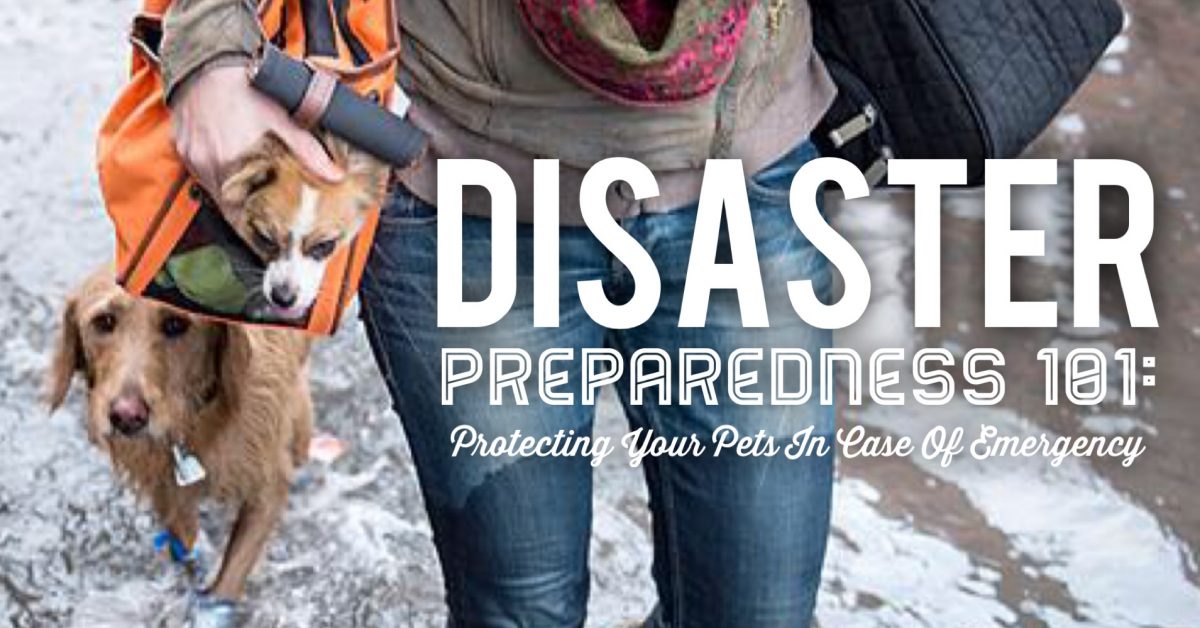
Disaster Preparation 101: Protecting Your Pets In Case Of Emergency
September is National Disaster Preparedness Month. If there’s ever a situation requiring evacuation in the area where you live, you’ll want to be ready to keep not only yourself safe, but your pets, too. Leaving pets out of emergency plans can put their lives and the lives of first responders in danger. There are three primary types of evacuation:
- Immediate evacuation for gas leaks or house fires, for instance, where every second is critical
- Short-notice evacuation which requires that you grab your pets and a few supplies and leave within a short period of time, like in the event of a toxic spill in your area
- Seasonal or weather-related evacuation like hurricanes or flooding when you’ll have time to plan for gathering your pets, packing up supplies, and making your way to predetermined routes to safety
Any unexpected departure can be difficult to manage, but there are ways to be prepared in the face of an emergency, many of which you may already be doing or are easy to accomplish.
- CHECK IDENTIFICATION – Make sure your pet is microchipped and the manufacturer has accurate contact information, including your name, address, phone numbers, and emergency contacts. You can also get an ID tag to add to your pet’s collar with your address and phone number so that finders can contact you immediately.
- FIND SAFE ACCOMMODATIONS – In case of an emergency, don’t assume that local shelters will accept your pet. Before a disaster hits, call your local office of emergency management to see if you will be allowed to evacuate with your pets and verify that there will be shelters in your area that take people and companion animals. Contact hotels and motels outside your immediate area to find out if they accept pets, any restrictions on number, size and species. Inquire if a “no pet” policy would be waived in an emergency. Keep a list of animal-friendly places handy, and call ahead for a reservation as soon as you think you might have to leave your home.
- PUT TOGETHER A DISASTER KIT – You can purchase a kit or put one together yourself. It’s recommended to have a minimum five-day supply of food and water, as well as any medications, veterinary records, plastic shopping bags, sturdy leashes with collars or harnesses, and a current picture of your pets in the event that you become separated.
Being as prepared as possible will lessen the odds of an evacuation disrupting and separating your family, but when disaster comes, there are ways to minimize the fallout.
- EVACUATE EARLY – Don’t wait for a mandatory evacuation order. Some people who have waited to be evacuated by emergency officials have been told to leave their pets behind. The smell of smoke or the sound of high winds or thunder may make your pet more fearful and difficult to load into a crate or carrier. Evacuating before conditions become severe will keep everyone safer and make the process less stressful.
- STAY HOME SAFELY – If your family and pets must wait out a storm or other disaster at home, identify a safe area of your home where you can all stay together. Move dangerous items such as tools or toxic products that have been stored in the area. Bring your pets indoors as soon as local authorities say trouble is on the way. Keep dogs on leashes and cats in carriers, and make sure they are wearing identification. If you have a room you can designate as a “safe room,” put your emergency supplies in that room in advance, including your pet’s crate and supplies. Have any medications and a supply of pet food and water inside watertight containers, along with your other emergency supplies.
After the event and when you are allowed to come home, be patient with your pets. Home may seem to be a different place after the emergency and they may need time to adjust. Try to get them back into their normal routines as soon as possible. Be ready for behavioral problems caused by the stress of the situation. If these problems persist, or if your pet seems to be having any health problems, talk to your veterinarian. Always stay safe, training family!
